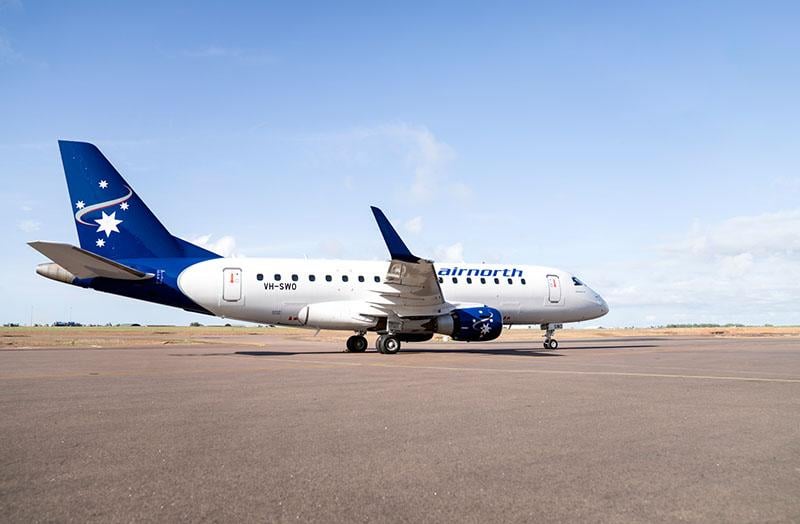
When it rains in Darwin, on the northern tip of Australia, it really rains. Monsoonal rains blanket the area from December until the dry season starts in May.
That reduces scheduled air passenger traffic to and from the city, which is where ‘FIFO’ work helps balance out the work undertaken by Darwin-based Airnorth.
FIFO is a significant earner for many airlines in Australia. Standing for ‘Fly In, Fly Out’, it refers to flying work crews to and from remote oil, gas and mining sites in the huge country.
“Our core business is regular public transport…but FIFO and charter services do balance out the wet season in Darwin,” Airnorth COO, Simon Gibbons explained.
Dry season sees the tropical ‘Top End’ of Australia attract large numbers of tourists. “It’s a bit like a Northern Hemisphere summer,” Gibbons said. “All the airlines go gangbusters in summer and try not to give all the money back in the winter. FIFO kind of irons out that public transport curve.”
Airnorth operates three Embraer E170s and three E190s, together with five earlier-generation Embraer E120 Brasilia turboprops. The 100-seat E190s are a particularly good fit for much of the activity in the Australian market, Gibbons said.
One reason for this is that Australia has the world’s greatest concentration of similarly sized Fokker F100s. Those aircraft are ageing and Gibbons foresees them being replaced by E190s.
On scheduled services, Airnorth tends to use its E-Jets for flights in and out of the Northern Territory. The shortest sector is a 45-minute hop from Darwin to Kununurra, just over the boundary into Western Australia. The longest sector is from Kununurra to Perth, the capital of Western Australia, which takes around three hours.
Airnorth is looking at expanding its operations in Perth, having recently moved some staff and pilots there. It is also instituting another long sector from Perth to Alice Springs, in the center of the continent.
The carrier also operates a sizeable amount of wet lease and charter work, including to several offshore islands such as Groote Eylandt “and we’ve got one today to Christmas Island, around 800 miles off the coast,” Gibbons said.
The harsh climate of the Australian hinterland means that Airnorth is periodically called upon to operate cyclone recovery and flood recovery flights “and we use the E-Jets on pretty short runways to achieve that.”
The E-Jets stand up particularly well to those conditions, he added: in many ways “It’s the perfect airframe.”





